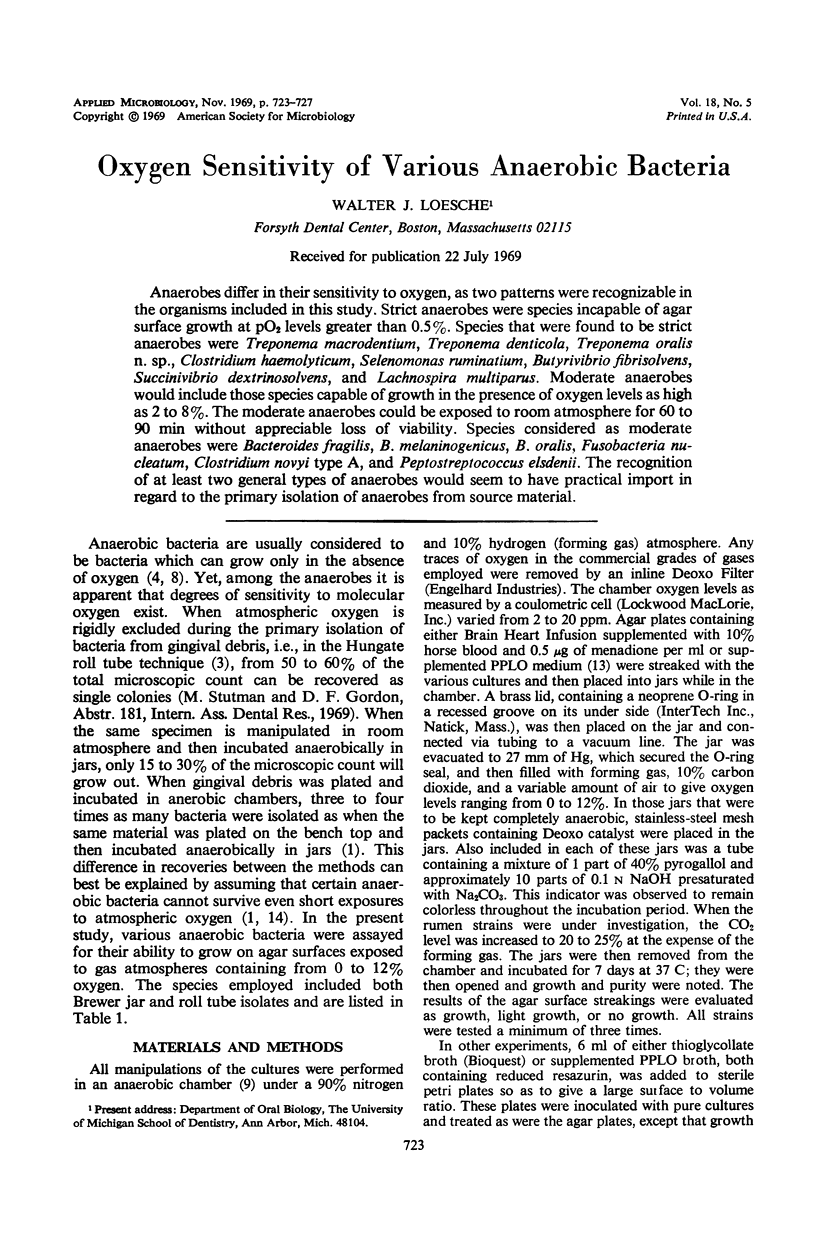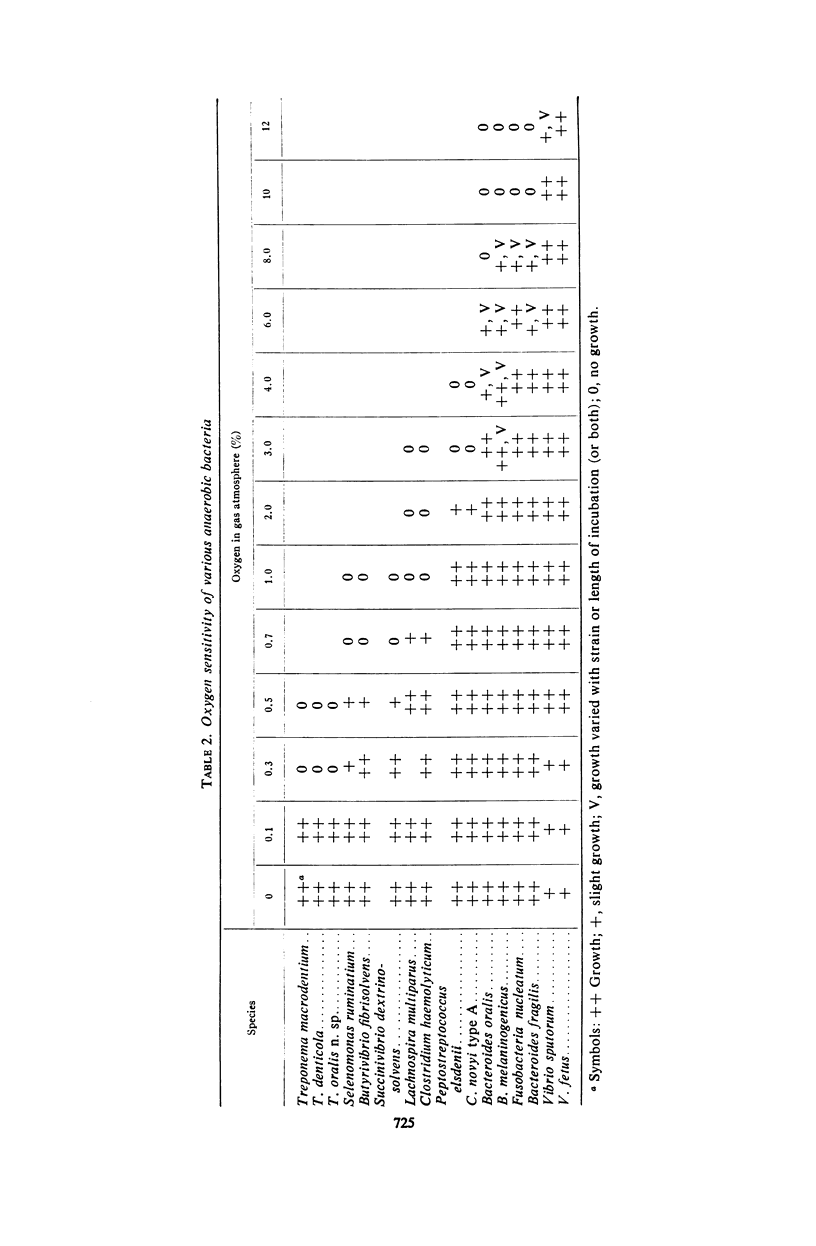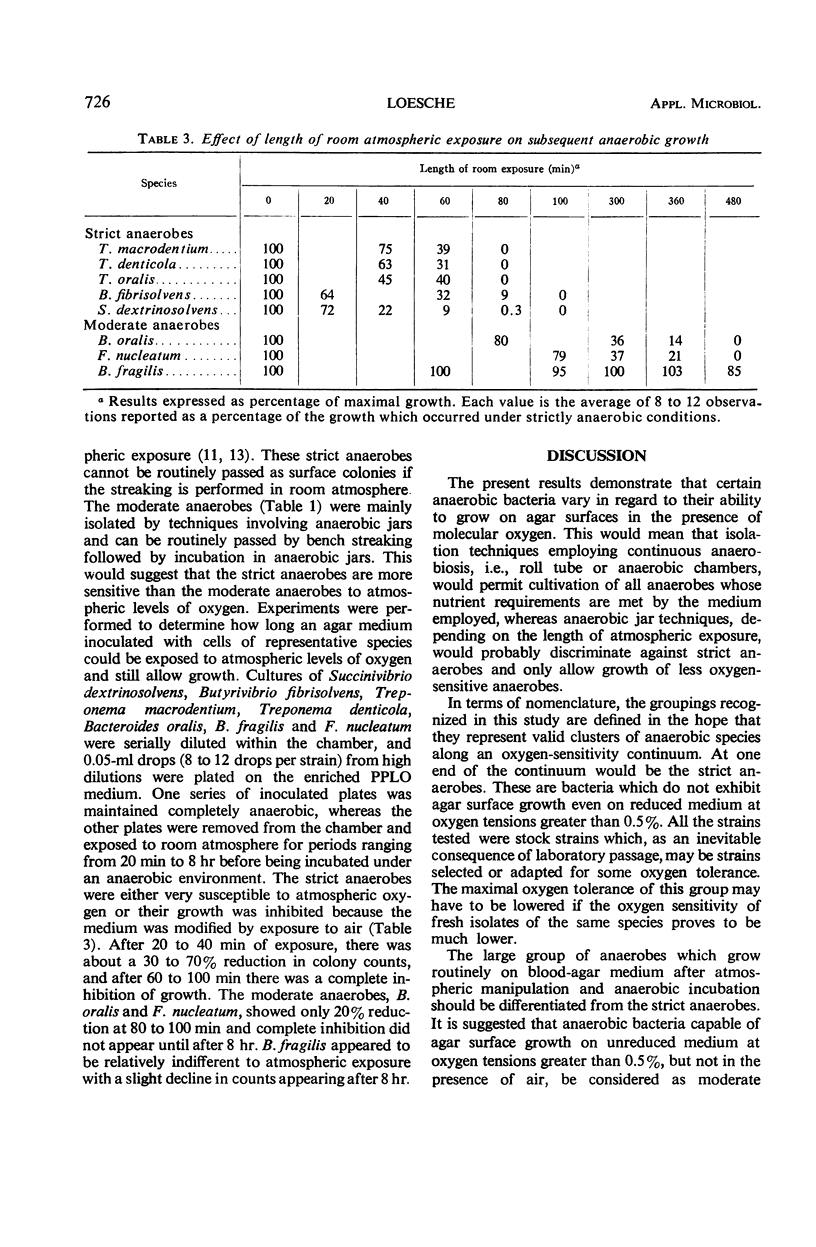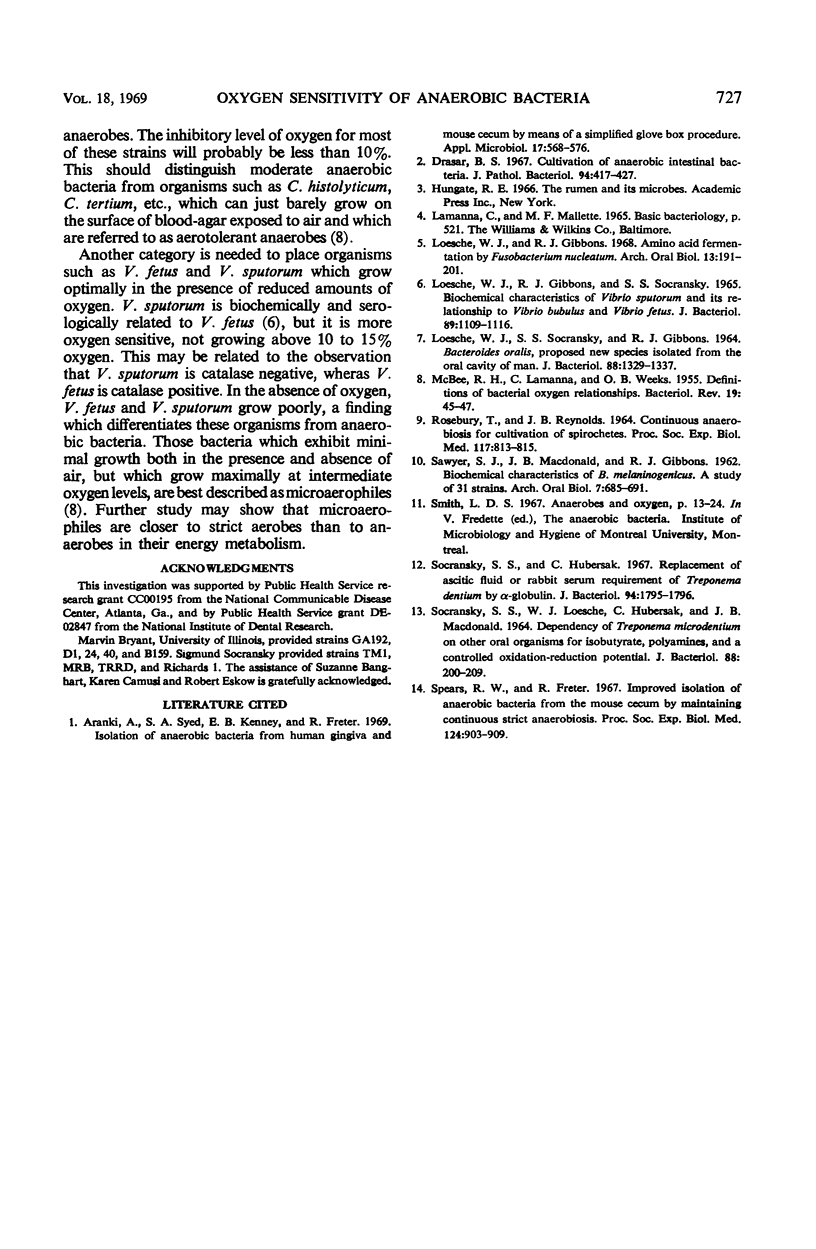Abstract
Anaerobes differ in their sensitivity to oxygen, as two patterns were recognizable in the organisms included in this study. Strict anaerobes were species incapable of agar surface growth at pO2 levels greater than 0.5%. Species that were found to be strict anaerobes were Treponema macrodentium, Treponema denticola, Treponema oralis n. sp., Clostridium haemolyticum, Selenomonas ruminatium, Butyrivibrio fibrisolvens, Succinivibrio dextrinosolvens, and Lachnospira multiparus. Moderate anaerobes would include those species capable of growth in the presence of oxygen levels as high as 2 to 8%. The moderate anaerobes could be exposed to room atmosphere for 60 to 90 min without appreciable loss of viability. Species considered as moderate anaerobes were Bacteroides fragilis, B. melaninogenicus, B. oralis, Fusobacteria nucleatum, Clostridium novyi type A, and Peptostreptococcus elsdenii. The recognition of at least two general types of anaerobes would seem to have practical import in regard to the primary isolation of anaerobes from source material.
Full text
PDF




Selected References
These references are in PubMed. This may not be the complete list of references from this article.
- Arank A., Syed S. A., Kenney E. B., Freter R. Isolation of anaerobic bacteria from human gingiva and mouse cecum by means of a simplified glove box procedure. Appl Microbiol. 1969 Apr;17(4):568–576. doi: 10.1128/am.17.4.568-576.1969. [DOI] [PMC free article] [PubMed] [Google Scholar]
- Drasar B. S. Cultivation of anaerobic intestinal bacteria. J Pathol Bacteriol. 1967 Oct;94(2):417–427. doi: 10.1002/path.1700940223. [DOI] [PubMed] [Google Scholar]
- LOESCHE W. J., GIBBONS R. J., SOCRANSKY S. S. BIOCHEMICAL CHARACTERISTICS OF VIBRIO SPUTORUM AND RELATIONSHIP TO VIBRIO BUBULUS AND VIBRIO FETUS. J Bacteriol. 1965 Apr;89:1109–1116. doi: 10.1128/jb.89.4.1109-1116.1965. [DOI] [PMC free article] [PubMed] [Google Scholar]
- LOESCHE W. J., SOCRANSKY S. S., GIBBONS R. J. BACTEROIDES ORALIS, PROPOSED NEW SPECIES ISOLATED FROM THE ORAL CAVITY OF MAN. J Bacteriol. 1964 Nov;88:1329–1337. doi: 10.1128/jb.88.5.1329-1337.1964. [DOI] [PMC free article] [PubMed] [Google Scholar]
- Loesche W. J., Gibbons R. J. Amino acid fermentation by Fusobacterium nucleatum. Arch Oral Biol. 1968 Feb;13(2):191–202. doi: 10.1016/0003-9969(68)90051-4. [DOI] [PubMed] [Google Scholar]
- McBEE R. H., LAMANNA C., WEEKS O. B. Definitions of bacterial oxygen relationships. Bacteriol Rev. 1955 Mar;19(1):45–47. doi: 10.1128/br.19.1.45-47.1955. [DOI] [PMC free article] [PubMed] [Google Scholar]
- ROSEBURY T., REYNOLDS J. B. CONTINUOUS ANAEROBIOSIS FOR CULTIVATION OF SPIROCHETES. Proc Soc Exp Biol Med. 1964 Dec;117:813–815. doi: 10.3181/00379727-117-29706. [DOI] [PubMed] [Google Scholar]
- SAWYER S. J., MACDONALD J. B., GIBBONS R. J. Biochemical characteristics of Bacteroides melaninogenicus. A study of thirty-one strains. Arch Oral Biol. 1962 Nov-Dec;7:685–691. doi: 10.1016/0003-9969(62)90117-6. [DOI] [PubMed] [Google Scholar]
- SOCRANSKY S. S., LOESCHE W. J., HUBERSAK C., MACDONALD J. B. DEPENDENCY OF TREPONEMA MICRODENTIUM ON OTHER ORAL ORGANISMS FOR ISOBUTYRATE, POLYAMINES, AND A CONTROLLED OXIDATION-REDUCTION POTENTIAL. J Bacteriol. 1964 Jul;88:200–209. doi: 10.1128/jb.88.1.200-209.1964. [DOI] [PMC free article] [PubMed] [Google Scholar]
- Socransky S. S., Hubersak C. Replacement of ascitic fluid or rabbit serum requirement of Treponema dentium by alpha-globulin. J Bacteriol. 1967 Nov;94(5):1795–1796. doi: 10.1128/jb.94.5.1795-1796.1967. [DOI] [PMC free article] [PubMed] [Google Scholar]
- Spears R. W., Freter R. Improved isolation of anaerobic bacteria from the mouse cecum by maintaining continuous strict anaerobiosis. Proc Soc Exp Biol Med. 1967 Mar;124(3):903–909. doi: 10.3181/00379727-124-31882. [DOI] [PubMed] [Google Scholar]


